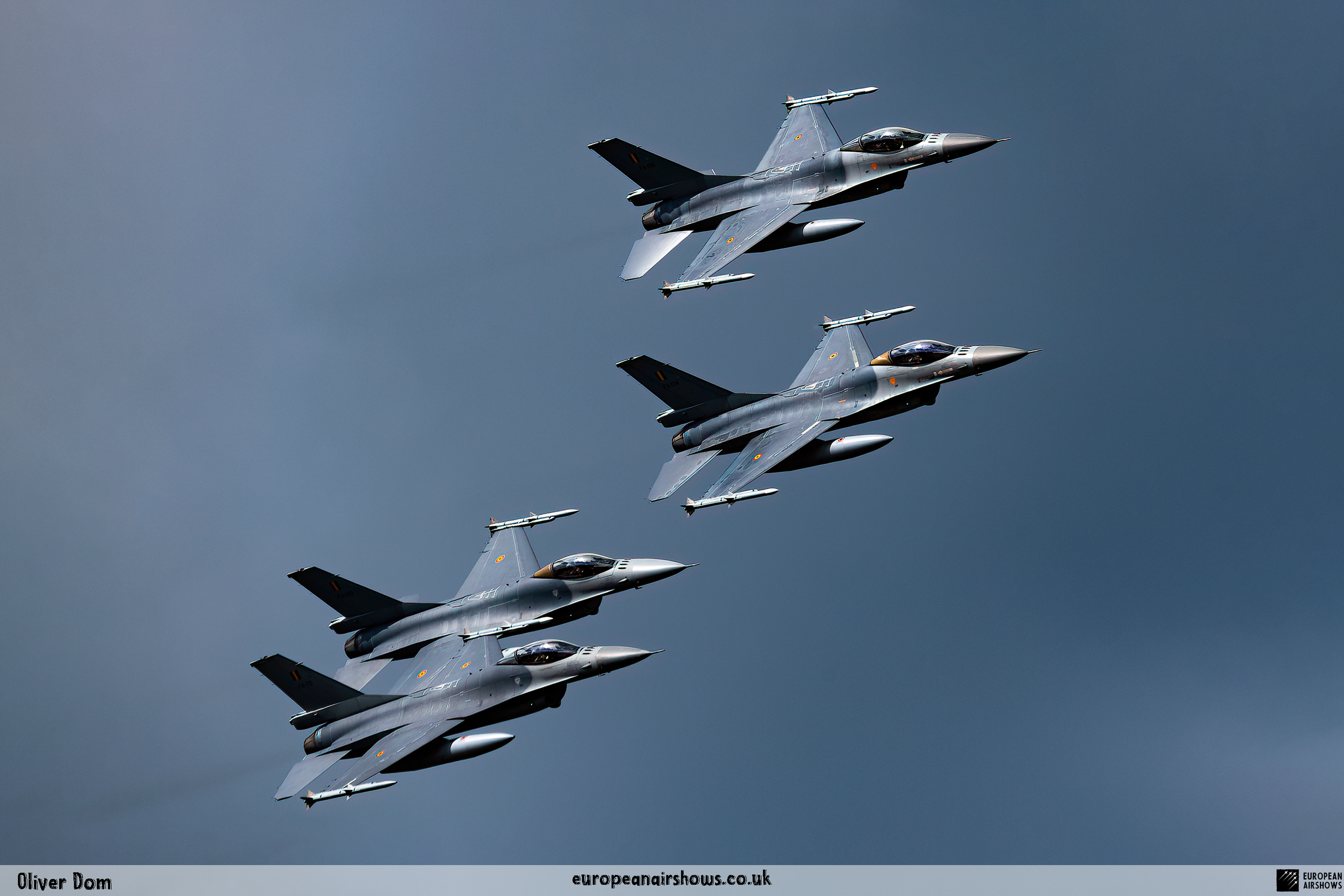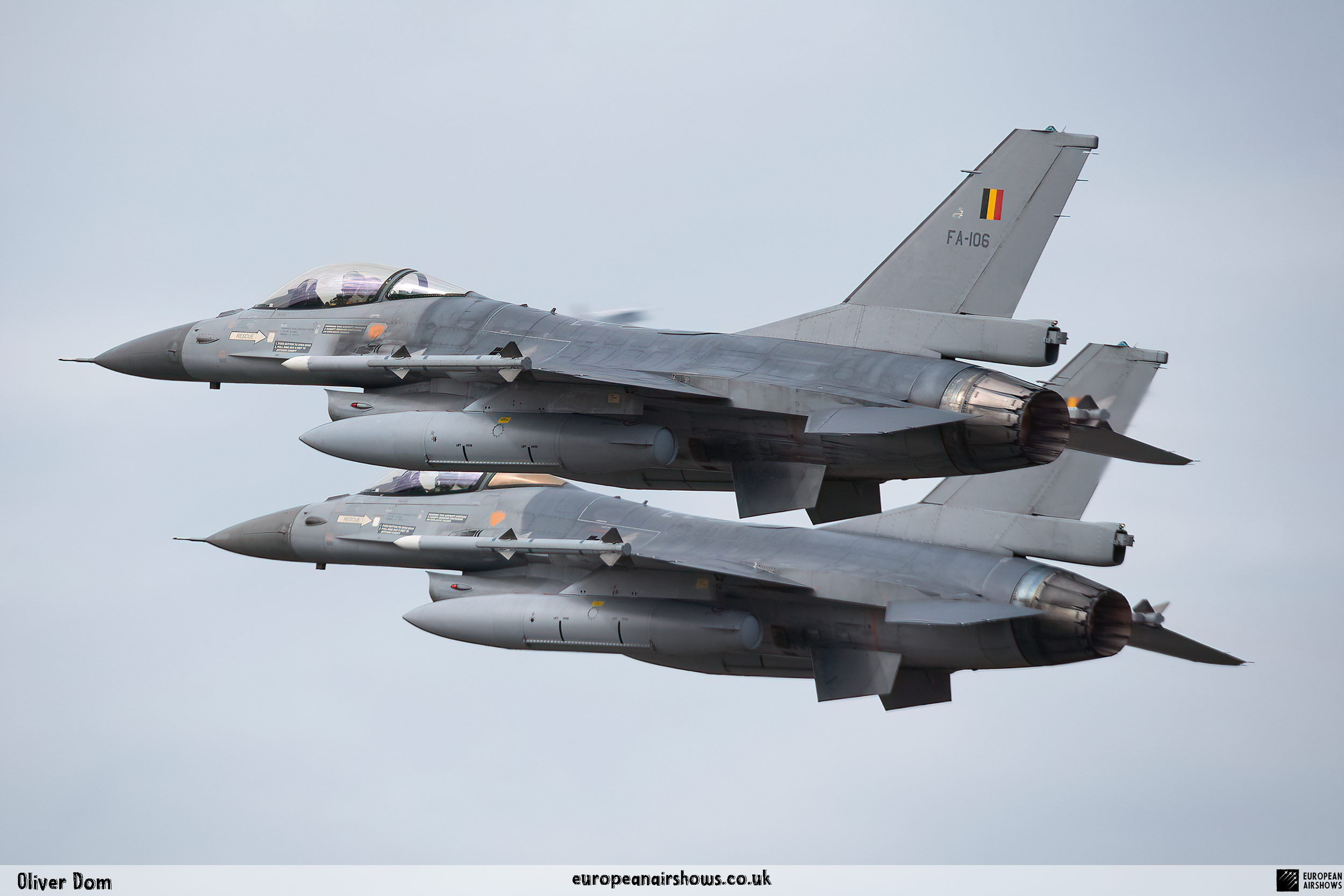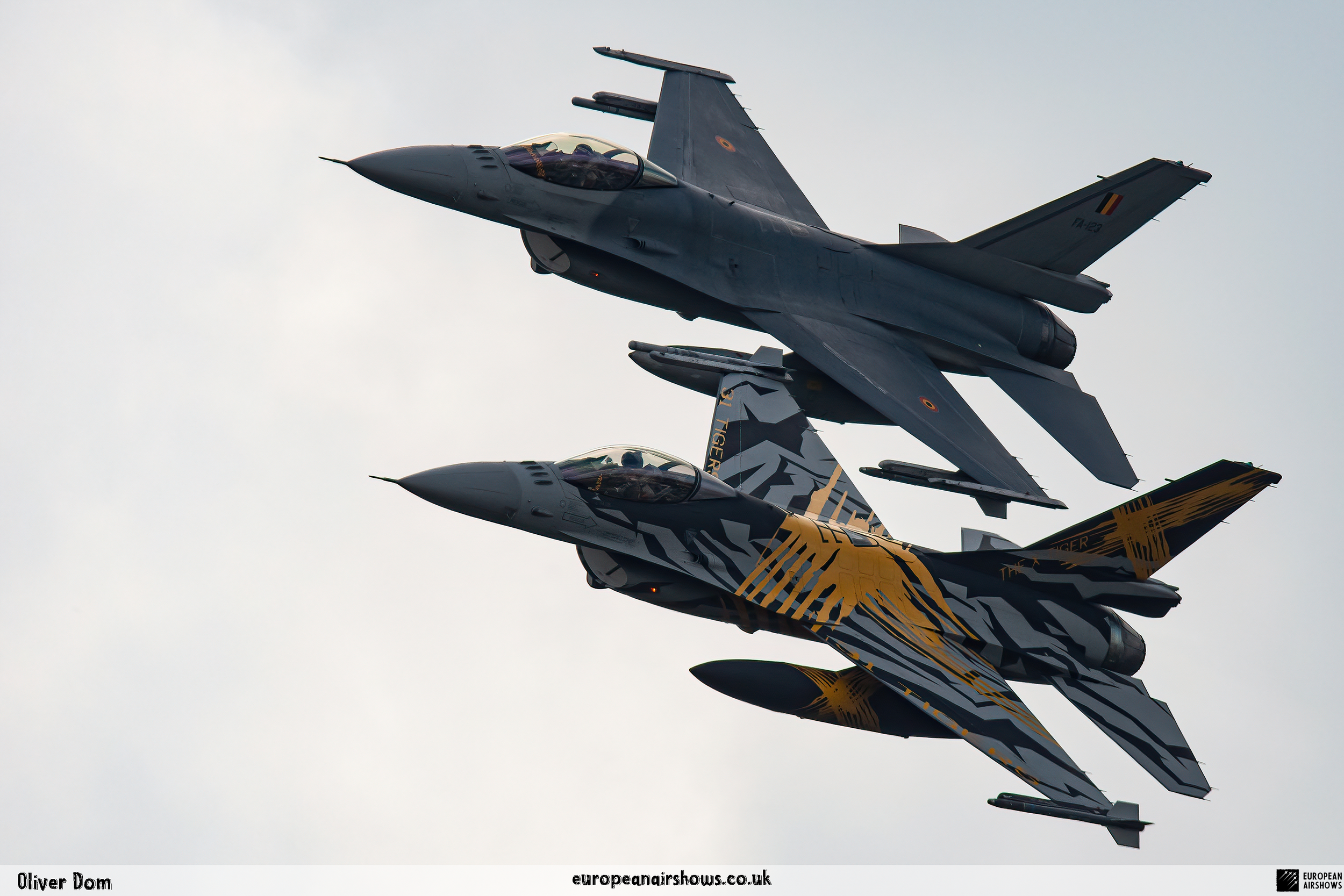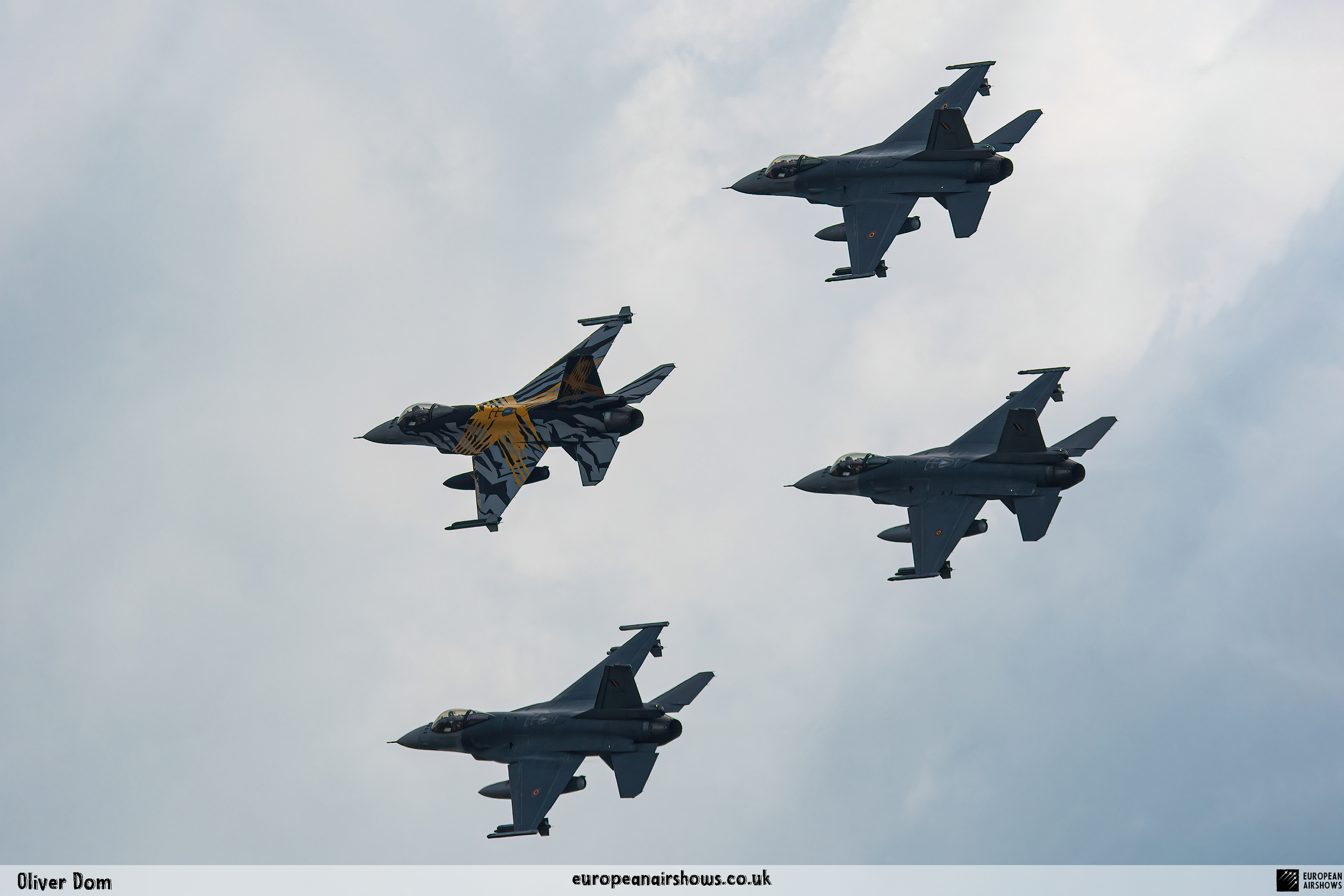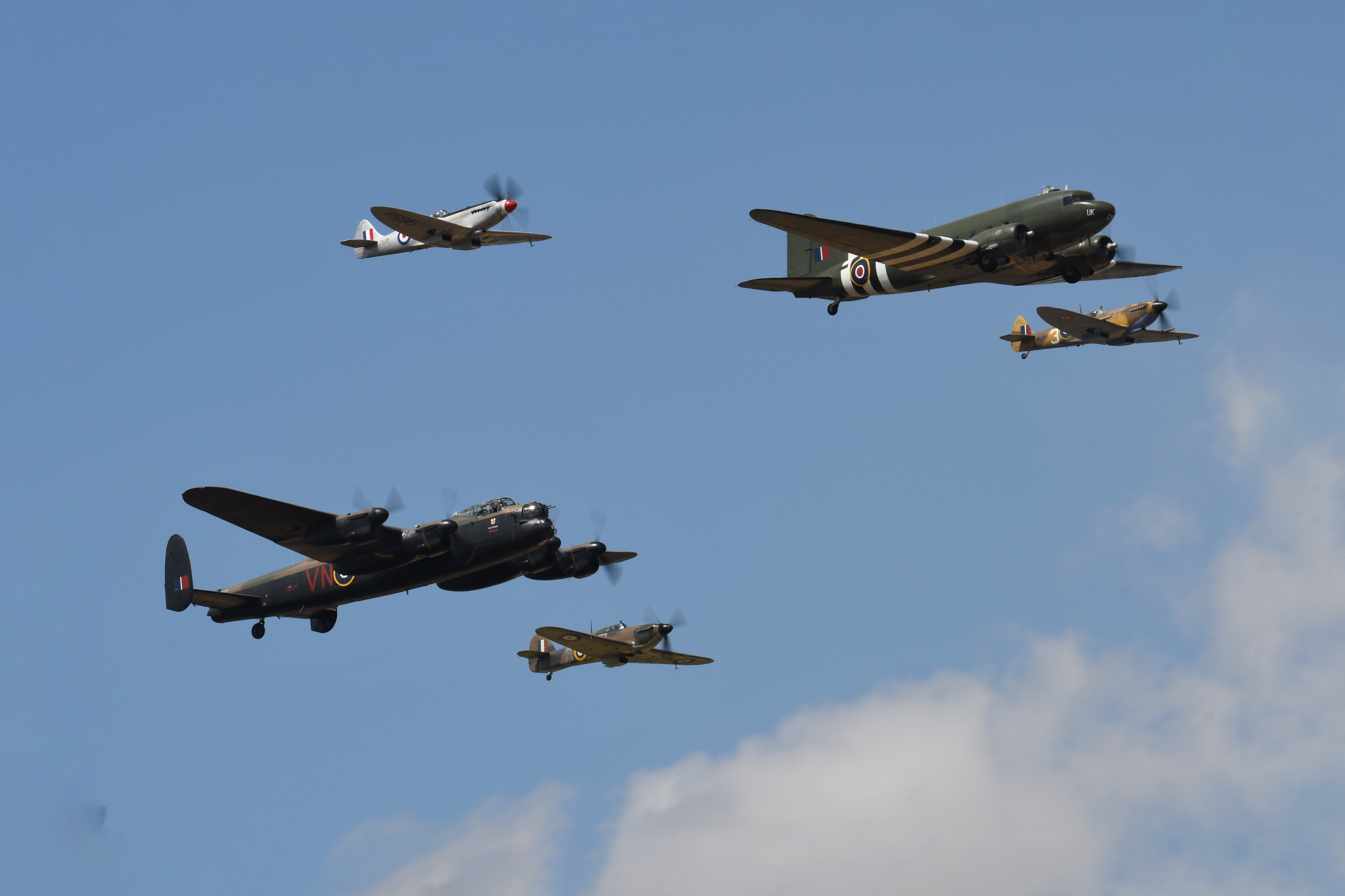Thunder Tigers
Country
Belgium
Size
4 Aircraft
Base
Kleine Brogel Air Base
The Thunder Tigers is a demonstration team of the Belgian Air Force. The team consists of four F-16AM fighter jets from the 31st Squadron at Kleine Brogel and usually performs only at the Sanicole Airshow and the Belgian Air Force Days. Thunder Tigers is the only team in Europe to fly the F-16s and all the pilots in the team are full-time fighter pilots from the 31st tiger squadron and display as a team as their side job. The display which lasts 10 minutes consists of flypasts in different formations as well as opposition passes, Breaks, high-speed passes and high G turns.
| Back to Top |
F-16A Block 20 MLU Fighting Falcon
The General Dynamics F-16 Fighting Falcon is a single-engine multirole fighter jet originally developed by General Dynamics for the United States Air Force (USAF). Designed as an air superiority day fighter, it evolved into a successful all-weather multirole aircraft. Over 4,600 aircraft have been built since production was approved in 1976. Although no longer being purchased by the U.S. Air Force, improved versions are being built for export customers. In 1993, General Dynamics sold its aircraft manufacturing business to the Lockheed Corporation, which in turn became part of Lockheed Martin after a 1995 merger with Martin Marietta.
The Fighting Falcon's key features include a frameless bubble canopy for better visibility, a side-mounted control stick to ease control while manoeuvring, an ejection seat reclined 30 degrees from vertical to reduce the effect of g-forces on the pilot, and the first use of a relaxed static stability/fly-by-wire flight control system that helps to make it an agile aircraft. The F-16 has an internal M61 Vulcan cannon and 11 locations for mounting weapons and other mission equipment. The F-16's official name is "Fighting Falcon", but "Viper" is commonly used by its pilots and crews, due to a perceived resemblance to a viper snake as well as the Colonial Viper starfighter on Battlestar Galactica which aired at the time the F-16 entered service.
In addition to active duty in the U.S. Air Force, Air Force Reserve Command, and Air National Guard units, the aircraft is also used by the U.S. Air Force Thunderbirds aerial demonstration team, and as an adversary/aggressor aircraft by the United States Navy. The F-16 has also been procured to serve in the air forces of 25 other nations. As of 2015, it was the world's most numerous fixed-wing aircraft in military service.
The F-16 is a single-engine, highly manoeuvrable, supersonic, multi-role tactical fighter jet. It is much smaller and lighter than its predecessors, but uses advanced aerodynamics and avionics, including the first use of a relaxed static stability/fly-by-wire (RSS/FBW) flight control system, to achieve enhanced manoeuvre performance. Highly agile, the F-16 was the first fighter aircraft purpose-built to pull 9-g manoeuvres and can reach a maximum speed of over Mach 2. Innovations include a frameless bubble canopy for better visibility, a side-mounted control stick, and a reclined seat to reduce g-force effects on the pilot. It is armed with an internal M61 Vulcan cannon in the left-wing root and has multiple locations for mounting various missiles, bombs and pods. It has a thrust-to-weight ratio greater than one, providing power to climb and vertical acceleration.
The F-16 was designed to be relatively inexpensive to build and simpler to maintain than earlier-generation fighters. The airframe is built with about 80% aviation-grade aluminium alloys, 8% steel, 3% composites, and 1.5% titanium. The leading-edge flaps, stabilators, and ventral fins make use of bonded aluminium honeycomb structures and graphite epoxy lamination coatings. The number of lubrication points, fuel line connections, and replaceable modules are significantly lower than preceding fighters; 80% of the access panels can be accessed without stands. The air intake was placed so it was rearward of the nose but forward enough to minimize airflow losses and reduce aerodynamic drag.
Although the LWF program called for a structural life of 4,000 flight hours, capable of achieving 7.33 g with 80% internal fuel; GD's engineers decided to design the F-16's airframe life for 8,000 hours and for 9-g manoeuvres on full internal fuel. This proved advantageous when the aircraft's mission changed from solely air-to-air combat to multi-role operations. Changes in operational use and additional systems have increased weight, necessitating multiple structural strengthening programs.
| Back to Top |
